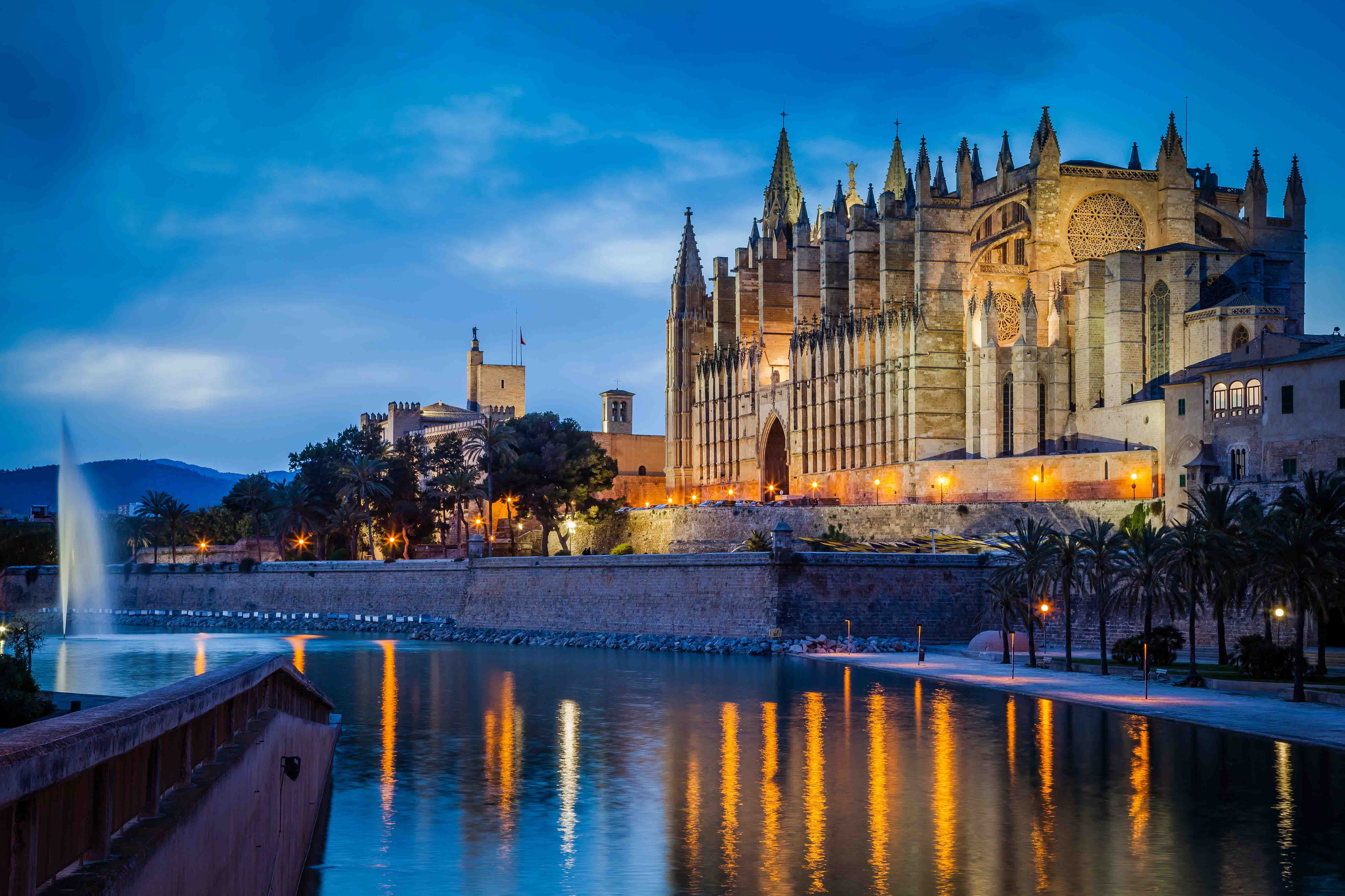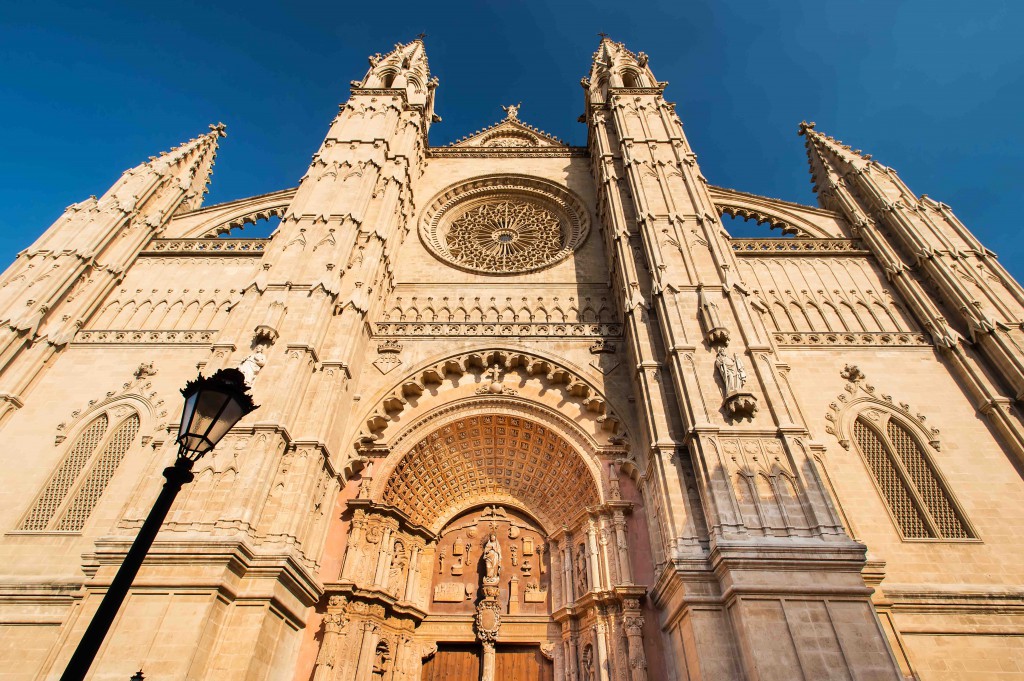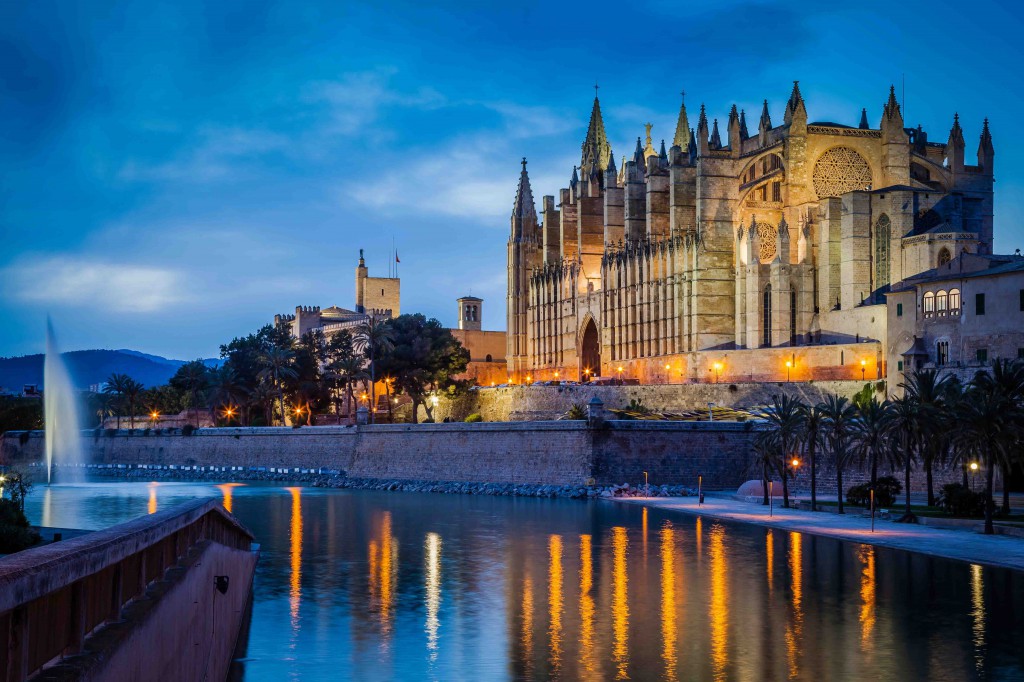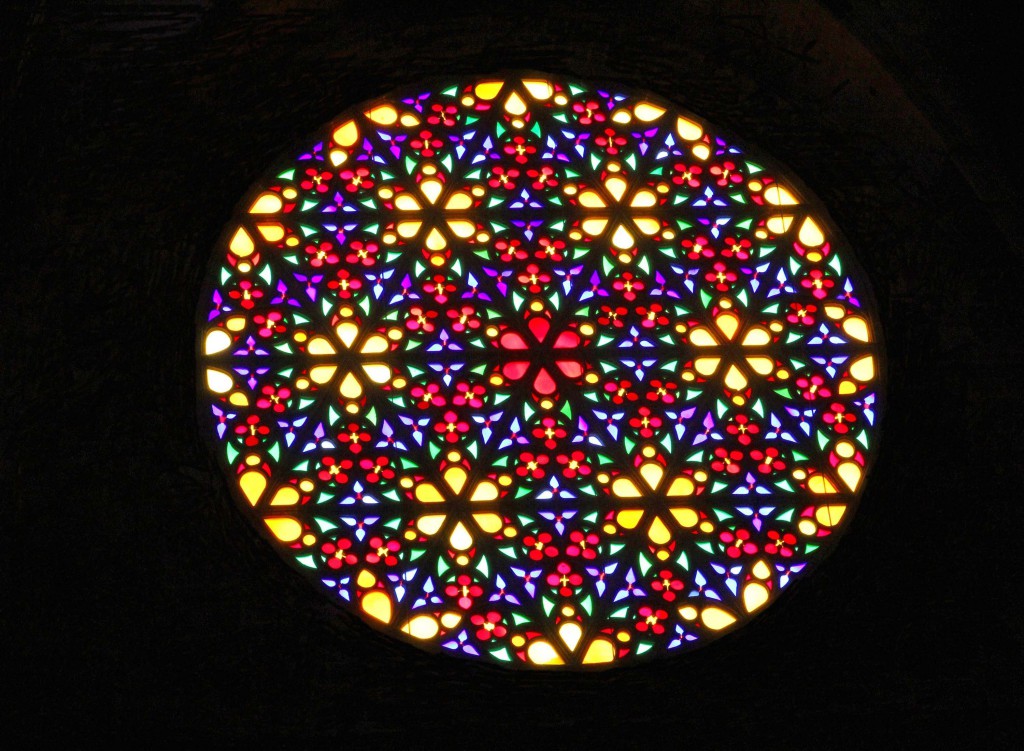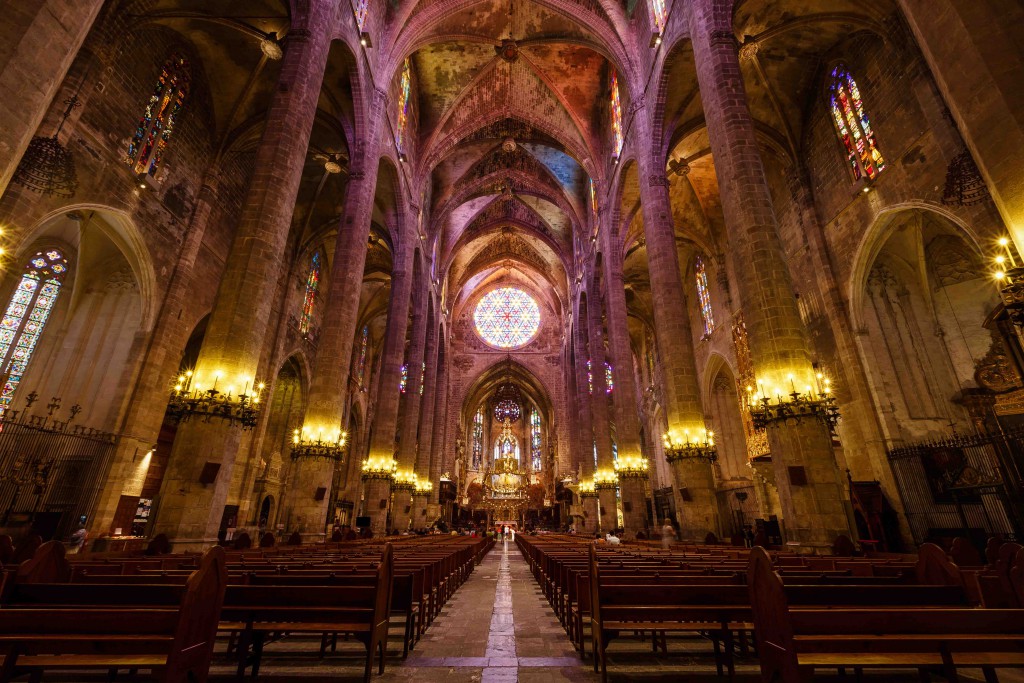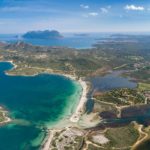This post is also available in: Spanish German
Atop of the Cliff where the ancient Roman city of Mallorca was born, and nearby the Palace of the Almudaina, shows off without complex the majestic Cathedral of Palma de Mallorca—also known as “La Seu”. This Mediterranean Gothic building seemed to arise from the sea in order to protect itself from the sailors and confront the invaders since it literally overlooks and juts out the sea. Prior to the cathedral’s construction was erected, the cliff where the cathedral is now was kissing the sea, thus the Cathedral of Palma de Mallorca’s silhouette reflected on the water. After centuries of evolution and expansion of the city that separated the temple from the sea. In the 70’s that effect was brought back with the construction of a salty-water lake that belongs to an urban park built nearby the cathedral.
In order to discover the beginnings of the Cathedral of Palma de Mallorca, we have to take a journey back to the 13th century. It was not until the Aragon’s crown took the city of Mallorca in 1229 that the King James I the Conqueror decided to build a great cathedral dedicated to Santa Maria in the very place where the former great Mosque of Medina Mayurca was. So, actually, the mosque adapted to the Christian cult and, as the cathedral was being built, the mosque started to progressively collapse until it was demolished in 1386.
The different architectonic styles that shape the Cathedral of Palma de Mallorca unite the past and the present transmitting a nice sensation of heterogeneous harmony. The cathedral’s structure has always been in constant evolution due to numerous extensions and restorations. It has also suffered changes to adapt different esthetic trends and also for liturgical requirements.
As a curiosity, Antonio Gaudi was appointed in the 20th century an adjustment project of the ecclesiastic space. And, more recently in 2007, Miquel Barcelo designed a ceramic mural for the chapel of the Santisimo or San Pedro. In order to create this mural, Miquel Barcelo was inspired in the evangelic miracle of the bread and fish– the result is an outstanding recreation of the sea bed over the chapel’s walls, with figures in relief that create a three-dimensionality sensation.
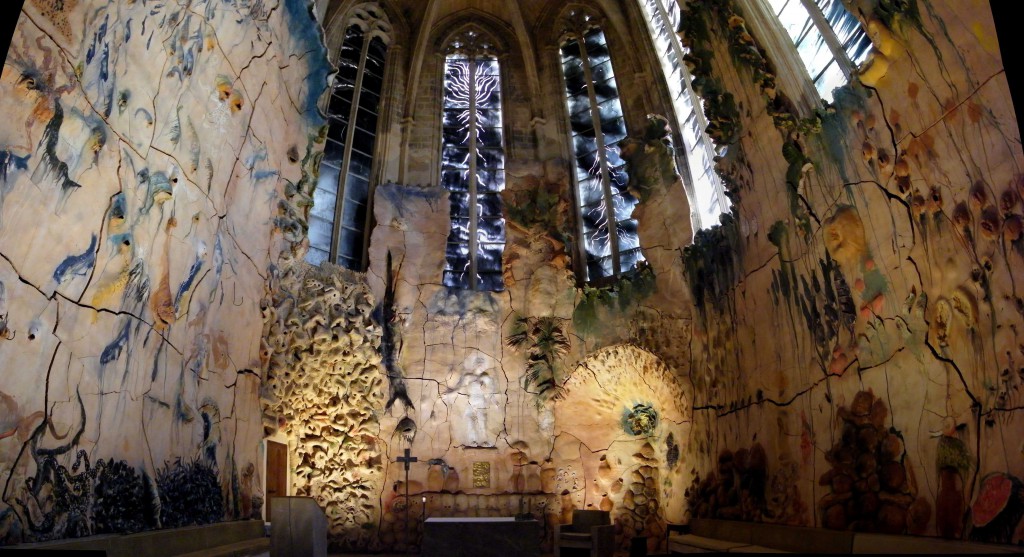
Ceramic mural created by Miquel Barcelo in the Cathedral of Palma de Mallorca. Image via http://www.designxavierserrano.com/works.html
It is well-known the trend—during the “Reconquest” period—to construct on top of already-existing religious buildings, yet in this case the main motivation that led James I to the construction of this temple dedicated to Santa Maria as a means of gratitude for having protected them during the heavy storm while on route by the sea towards Mallorca in 1229.
They say the Cathedral of Palma de Mallorca transmits a magic sensation. The fact that it is so close to the sea and with its 59 large windows and 5 rose windows (originally 87 and 7 respectively) unite to create a unique visual experience that makes this cathedral be known as the “cathedral of the light”. At 12 noon, in its interior, you can enjoy the seductive spectacle of the sun rays entering through its huge 13,8-meter rose window—also known as “the Gothic eye”—which decomposes the light into hundreds of colors that illuminate one of its corners and make them all magic.
This visual effect becomes more accentuated by the sensation of amplitude that generates the spatial layout of the tall and thin columns that support the structure. If you also able to pay a visit to the island on February 2nd or November 11th, in a clear day, you will be witness the so-called “Espectacle del Vuit” (The spectacle of the eight in English), that consists of: from 8am, the sun rays penetrate the rose window and draw two rose windows, one is an actual real glass window and the other is made of light and deceit.
If you want to feel the magic of the Cathedral of the light in person, do not hesitate and include this in your travel planning. Just take a look at the schedule and rates from their website.
And, if you are looking for other interesting places to visit in Mallorca besides the Cathedral of Palma de Mallorca, take a look at our blog posts about Mallorca.

